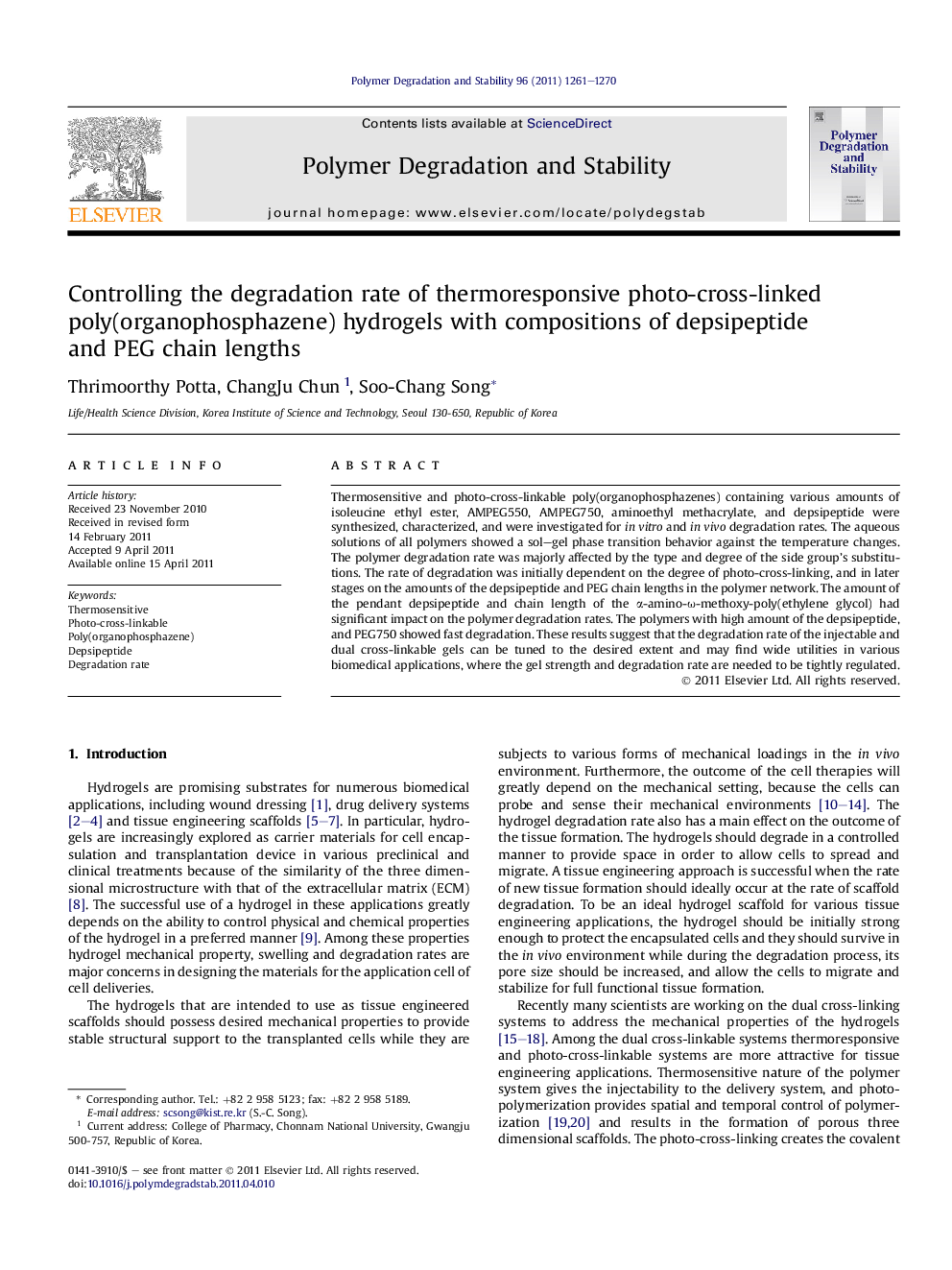| Article ID | Journal | Published Year | Pages | File Type |
|---|---|---|---|---|
| 5203584 | Polymer Degradation and Stability | 2011 | 10 Pages |
Abstract
Thermosensitive and photo-cross-linkable poly(organophosphazenes) containing various amounts of isoleucine ethyl ester, AMPEG550, AMPEG750, aminoethyl methacrylate, and depsipeptide were synthesized, characterized, and were investigated for in vitro and in vivo degradation rates. The aqueous solutions of all polymers showed a sol-gel phase transition behavior against the temperature changes. The polymer degradation rate was majorly affected by the type and degree of the side group's substitutions. The rate of degradation was initially dependent on the degree of photo-cross-linking, and in later stages on the amounts of the depsipeptide and PEG chain lengths in the polymer network. The amount of the pendant depsipeptide and chain length of the α-amino-Ï-methoxy-poly(ethylene glycol) had significant impact on the polymer degradation rates. The polymers with high amount of the depsipeptide, and PEG750 showed fast degradation. These results suggest that the degradation rate of the injectable and dual cross-linkable gels can be tuned to the desired extent and may find wide utilities in various biomedical applications, where the gel strength and degradation rate are needed to be tightly regulated.
Related Topics
Physical Sciences and Engineering
Chemistry
Organic Chemistry
Authors
Thrimoorthy Potta, ChangJu Chun, Soo-Chang Song,
